If you think of a dreamy destination, Bhutan is probably on top of your list. This country has captured the hearts of many travellers because of its awe-inspiring views. But, what is the best time to travel to Bhutan?
The eastern Himalayas is one of the best places in the world, and it is here where the Kingdom of Bhutan is located. Known all over the world as a land of mystique, ancient traditions blend its dedication with preserving natural beauty.
The last Shangri-La offers travellers an incredible opportunity to immerse themselves in a culture that values happiness over material wealth. However, when is the perfect time to visit this enchanting destination?
Unfortunately, the answer isn't as straightforward as you might think because each season has its charm, making any time potentially the best time to travel.
Pack your sense of adventure (and maybe leave room for a few souvenirs), as you go on an adventure.
Table of Contents:
When winter's chill begins to fade, Bhutan awakens to the beauty of spring which spans from March to May. This season is widely regarded as one of the best times to visit the country because the weather is mild and pleasant, with daytime temperatures ranging from 15°C to 25°C. Therefore, it is ideal for outdoor exploration.
During this season, Bhutan offers a spectacular display of rhododendron blooms. From mid-March to May, entire hillsides burst into a riot of pink, red, and white as these iconic world-famous flowers come into full bloom. The sight is truly breathtaking, especially in regions like the Phobjikha Valley and the Royal Botanical Park in Lampelri.
It is also worth noting that spring is also a time of significant cultural celebrations. The Paro Tshechu, which is a famous Bhutan festival, typically takes place in March or April. This event features colourful masked dances and traditional music. Spectators can also see a rare display of a giant thangka which is a religious painting, making it a fantastic opportunity to witness Bhutanese culture in all its glory. Who knows? You might even catch a glimpse of the royal family who often attend the festivities.
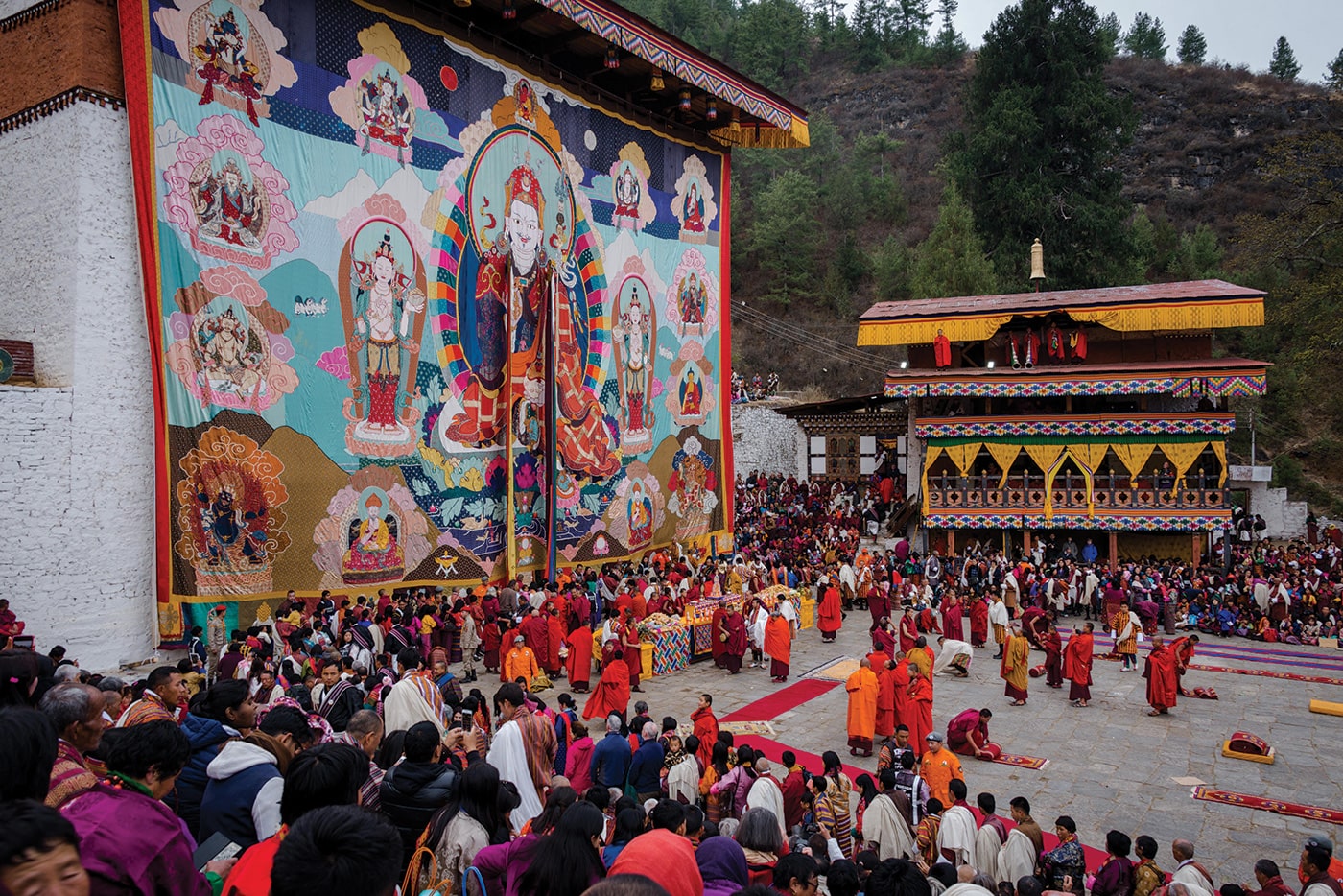
Are you a trekking enthusiast? Spring also has the best conditions for exploring Bhutan's landscapes. Popular routes like the Druk Path Trek and the Jomolhari Trek are particularly popular during this season. Expect clear skies and breathtaking views of snow-capped Himalayan peaks.
That said, spring is also one of the busiest tourist seasons in Bhutan. Accommodations and guides can be booked up quickly, especially around festival dates. If you're planning a spring visit, remember to make your arrangements well in advance - ideally several months before your intended travel date.
Contrary to popular belief, summer (June to August) can be an excellent time to visit Bhutan for those looking to avoid crowds and snag some deals. Yes, this is the monsoon season but don't let that deter you.
The rain in Bhutan is not the constant downpour you might expect. Instead, you're more likely to experience short, heavy showers in the afternoons. The mornings are clear for exploration.
The summer rains transform Bhutan into a lush, green paradise. The valleys are at their most lush. Rice paddies also show new growth. Even the waterfalls are so alive. It's a photographer's dream with the location offering a contrast to the colours of Bhutan's traditional architecture.
Additionally, this season is ideal for visiting the lower-altitude regions of Bhutan, such as the subtropical Punakha Valley. The famous Punakha Dzong situated at the confluence of two rivers is beautiful during this time since it is surrounded by blooming jacaranda trees.
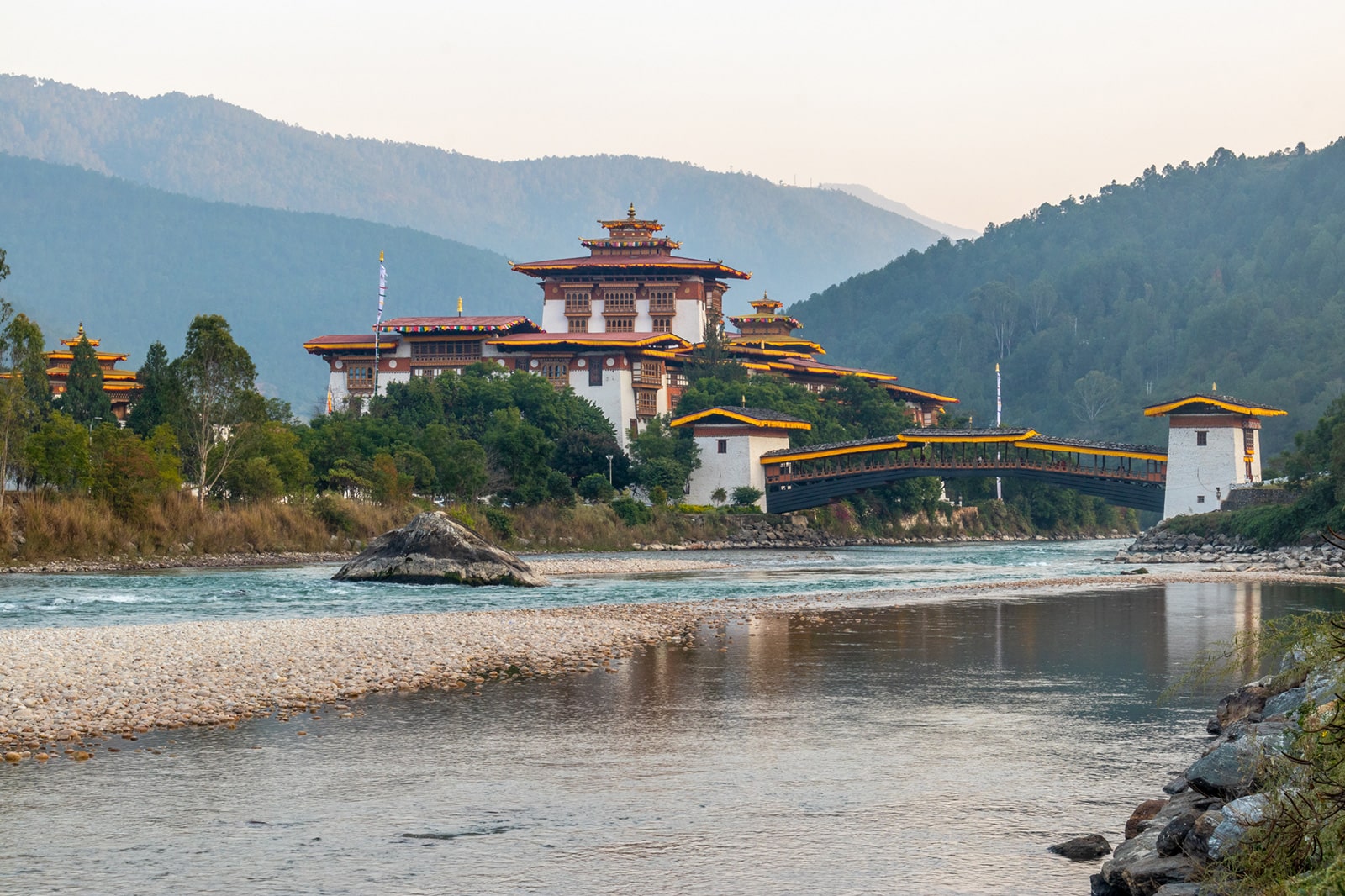
Summer also brings some unique cultural experiences. The Nimalung Tshechu in Bumthang and the Kurjey Tshechu in Bumthang are two noteworthy festivals that take place in June. These events offer a more intimate experience of Bhutanese culture that is away from the larger crowds of the peak tourist seasons.
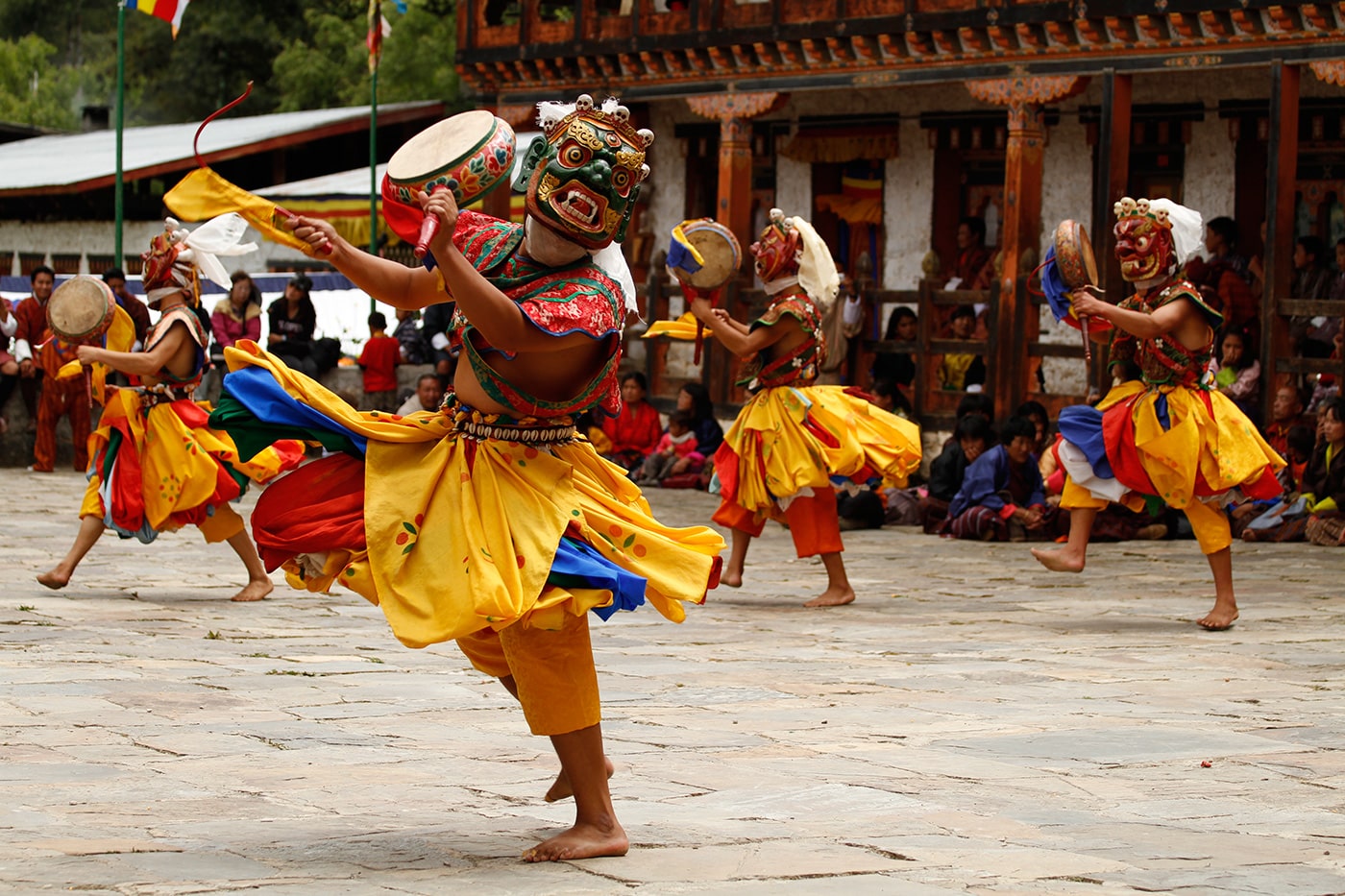
Meanwhile, nature lovers love summer since it is the best time to witness Bhutan's flora in full bloom. The country's national flower, the blue poppy, makes its appearance in high-altitude areas during this time. It's also an excellent time for birdwatching as many species are active during this period.
Unfortunately, travellers must be prepared for occasional travel disruptions due to rain-induced landslides, especially in more remote areas. Packing waterproof gear and adopting a flexible attitude will go a long way in ensuring an enjoyable summer visit to Bhutan.
This time, the monsoon rains recede and Bhutan enters its most popular tourist season. Autumn spans from September to November and is characterised by clear skies and comfortable temperatures. The humidity is also low so it’s the perfect condition for both sightseeing and trekking.
The location during autumn is nothing short of amazing. The rice fields turn a rich golden colour as harvest time approaches.
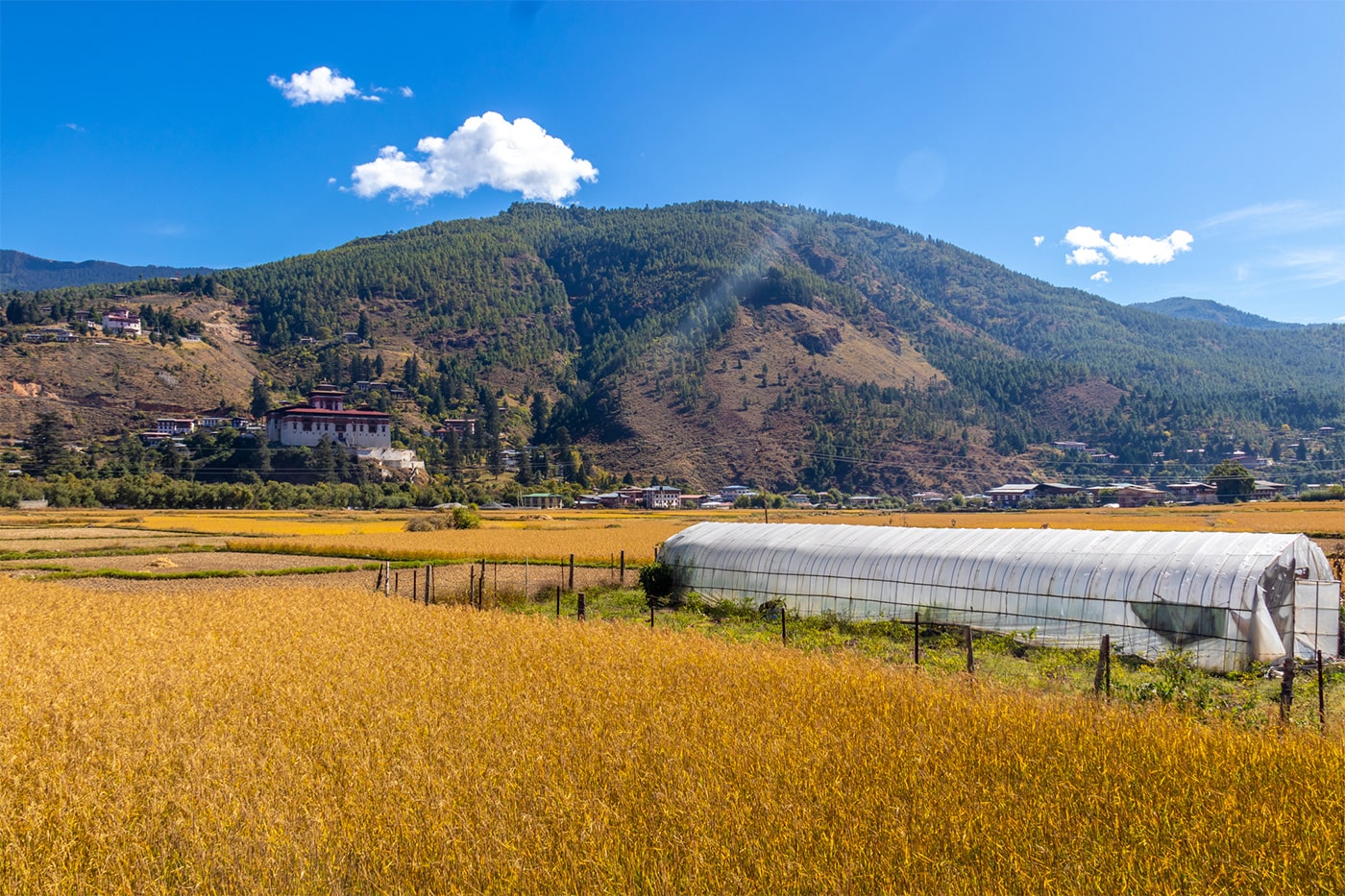
Autumn is also the season of festivals in Bhutan. The Thimphu Tshechu held in the capital city is one of the largest and most important festivals in the country. Taking place in September or October (depending on the lunar calendar), it's a three-day event with masked dances, music, and religious ceremonies. The Black-Necked Crane Festival in November is another highlight which celebrates the arrival of these endangered birds to their winter habitat in the Phobjikha Valley.

Trekking enthusiasts will also enjoy popular routes like the Snowman Trek and the Laya Gasa Trek thanks to great weather that provides an unobstructed view of the Himalayan peaks.
The perfect conditions and cultural events make autumn the busiest and most expensive time to visit Bhutan. Hotels can be fully booked months in advance, especially in popular areas like Paro and Thimphu. If you're planning an autumn trip, it's crucial to book well ahead - at least 4-6 months in advance is recommended.
Winter in Bhutan, from December to February, is a season often overlooked by travellers. However, for those willing to brave the colder temperatures, it offers a one of a kind rewarding experience.
The weather during winter is cold and dry, with daytime temperatures ranging from 5°C to 15°C in the western valleys, dropping below freezing at night especially at higher altitudes. The Himalayan peaks become a photographer's dream this time.
A highlight of winter in Bhutan is the opportunity to witness the black-necked cranes in the Phobjikha Valley. These majestic birds arrive in late October and stay until mid-February, attracting bird enthusiasts from around the world.
Winter also brings some unique festivals. The Druk Wangyel Tshechu held at the Dochula Pass in December is a relatively new addition to Bhutan's festival calendar but is quickly gaining popularity. The sight of masked dancers performing against a backdrop of snow-capped mountains is mesmerising.
For budget-conscious travellers, winter can be an attractive option. With fewer tourists, you can often find good deals on accommodation and tours. It's also a great time to experience Bhutanese hospitality at its best with more opportunities for meaningful interactions with locals.
Remember that high-altitude trek routes may be inaccessible due to snow and some remote areas might have limited facilities during this season. Proper winter gear is a non negotiable if you're planning a winter visit.
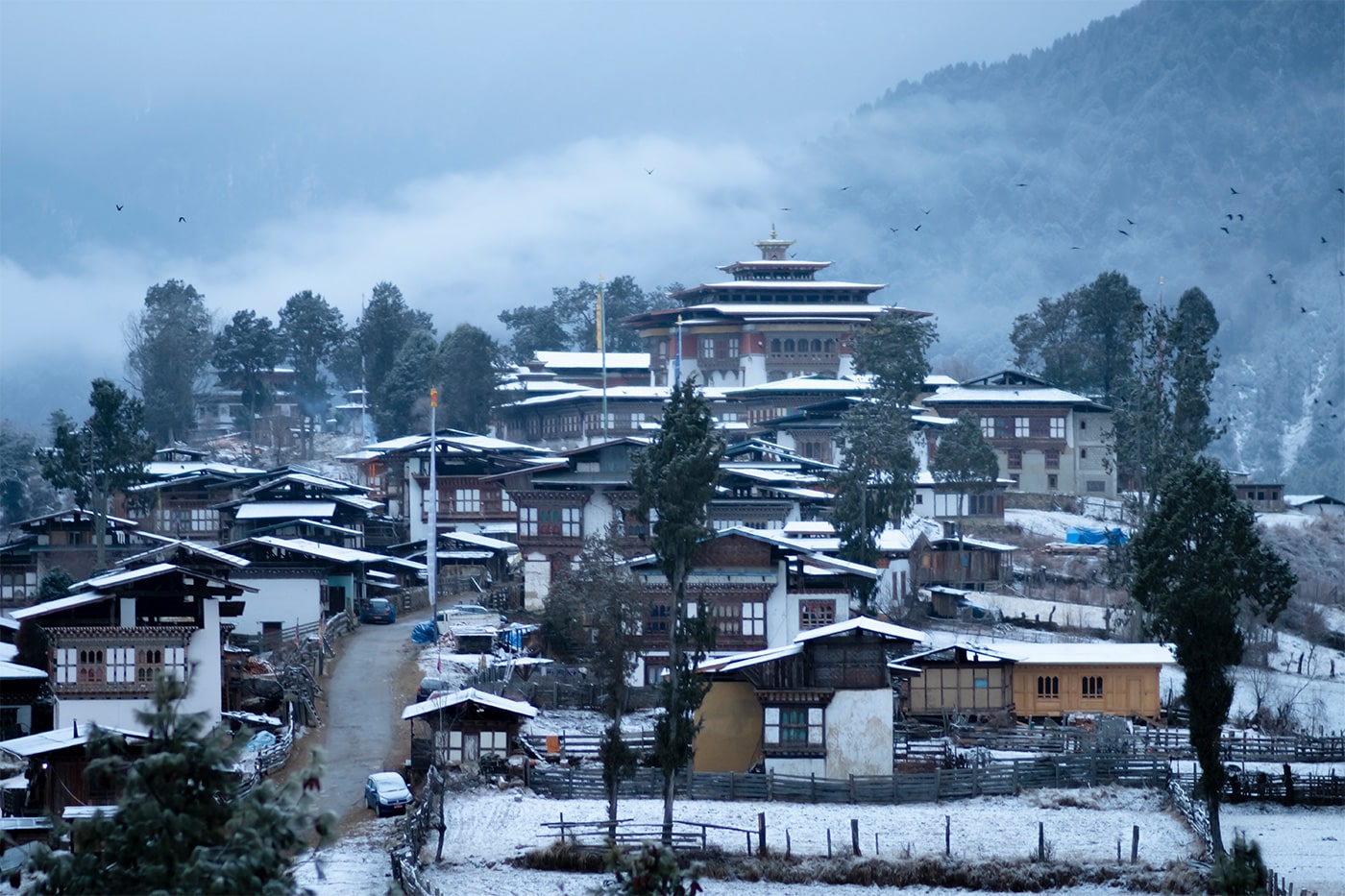
Regardless of when you choose to visit Bhutan, there are some general tips to keep in mind.
Accommodation and even guides can book up quickly during peak seasons. It is highly recommended for you to book your trip at least six months in advance.
Much of Bhutan is at high altitude which can cause altitude sickness so take it easy for the first few days. Stay hydrated. You need time to acclimatise with the varying altitudes.
The country has a strong Buddhist culture. Dress modestly when visiting religious sites. Finally, always ask permission before taking photos of people.
Find out the Do’s and Don’ts in Bhutan.
The weather can be unpredictable and layered clothing is advisable year-round. Don't forget comfortable walking shoes for exploring dzongs and monasteries. Check out the ultimate packing list for Bhutan.
Weather conditions and festival dates can change fast which means a flexible attitude will help you make the most of your trip, regardless of any unexpected changes.
So when is the best time to travel to Bhutan? The truth is there's no one-size-fits-all answer. Each season offers its own benefits or challenges.
The best time for you will depend on your personal preferences and most importantly, what you hope to experience in Bhutan. Remember that a trip to Bhutan may be a holiday for you, but it is also an opportunity to experience a culture unlike any other. It's a chance to disconnect from the modern world and reconnect with nature.
Discover also: Travel Packages to Bhutan
Book your Singapore to Bhutan flight today and embark on an unforgettable journey to the Land of the Thunder Dragon! Book now.